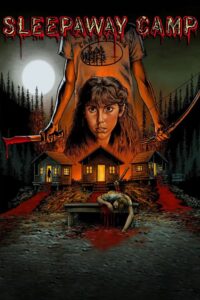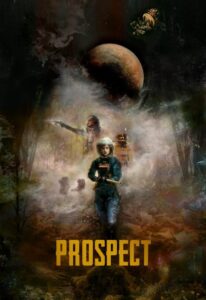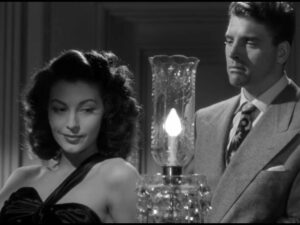One of my recent podcast discoveries, Junk Food Cinema, recently dedicated an episode to the 1983 slasher movie Sleepaway Camp. Near the start of the episode the hosts recommended if you had not seen the movie to watch it before diving into the podcast and since I knew it was currently streaming on Shudder that is exactly what I did. It should be noted that the hosts do not consider Sleepaway Camp a good movie, in fact they were covering it per a patron request, but they praised it final 10 seconds.
Sleepaway Camp is very much like Friday the 13th in that people at a summer camp are being killed by an unknown person and part of the film’s twist is who is the killer. Much like that  original Friday film the killer’s motivation is tied to events years earlier seen at that start of the film. Unlike Friday every single person killed is a horrible human being which in many ways places audience sympathies, if there are any, smack on the killer’s side.
original Friday film the killer’s motivation is tied to events years earlier seen at that start of the film. Unlike Friday every single person killed is a horrible human being which in many ways places audience sympathies, if there are any, smack on the killer’s side.
Save for the final shot the film has no originality in the cinematography with flat lighting, uninspired composition, and no real use of depth of field. The writing is terrible with some of the least lifelike dialog that has ever assaulted my ears and with character actions and reactions utterly disconnected from any semblance of actual human behavior. None of the performers have the skill to make the lines sound even close to credible.
In an unusual twist for this sort of production the women and girls are not filmed in a fetishistic manner but there is certainly the impression that men and boys are.
I have heard that this film has become a cult staple among the gay horror film community and on one level I can understand it. The killer’s eventual motivation is revealed to be in part revenge for gender identity bullying and that sort of revenge fantasy could be enjoyable in a power claim manner. However, the revelation of the killer and their motivation walks the familiar ground of transphobia.
Sleepaway Camp is not a film I can recommend other than as an exercise in understanding aspects of cult cinema. If you decide to watch it you may want to have twitter or a book handy to read while you wait for the next kill to take place.






